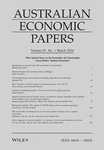The Australian Greens have recently proposed the establishment of a new federal government agency to build 360,000 extra homes over five years. These homes would be sold or rented at below-market rates. The appraisal of this plan has so far been confined to a fiscal balance perspective, where completed homes are sold, rental income is received, and government administration and borrowing costs are serviced. This ignores the flow-on effects on the broader economy from expanded residential building construction activity.
This paper starts to fill this gap by using a simple Leontief input–output model to analyse a counterfactual in which the Greens’ plan is partially implemented into the structure of the Australian economy in 2021–2022. In light of the $84.14 billion static change in the level of total national product that, other things equal, must have occurred to satisfy an augmented final use bill corresponding to the Greens’ plan, the simulation finds that projected imposts on the federal budget are rendered relatively modest. Potential extensions and applications of the model for policymakers are considered.

